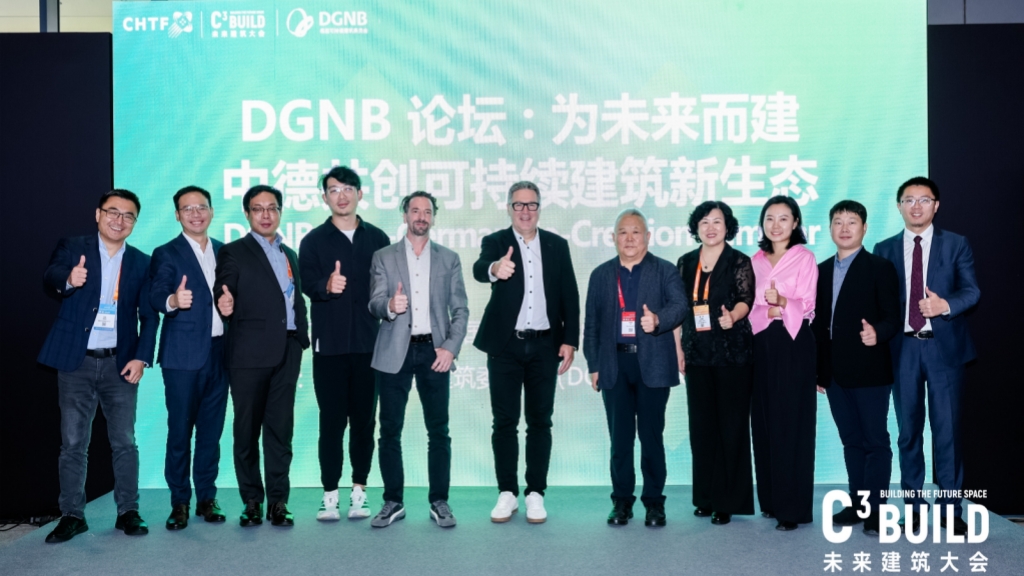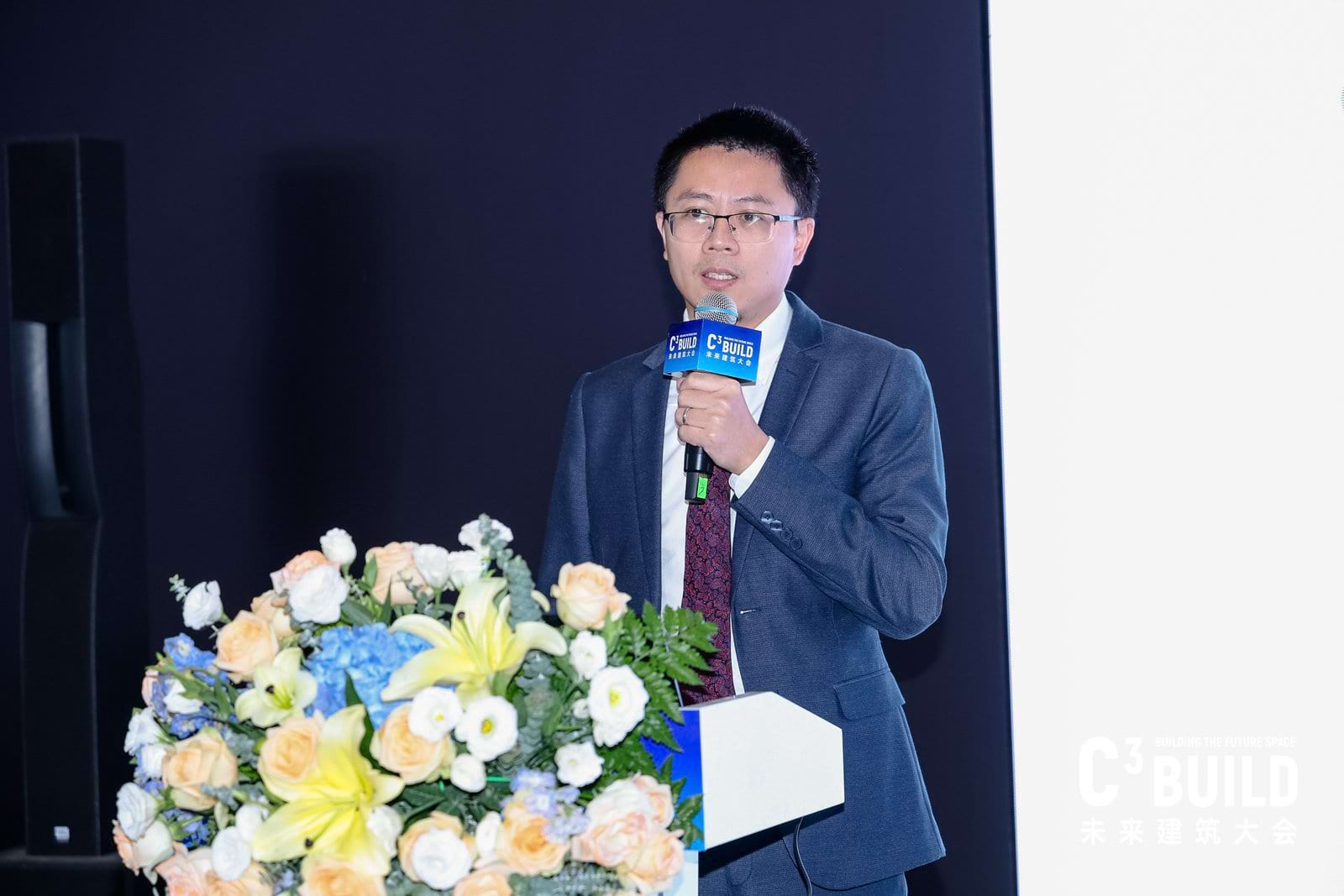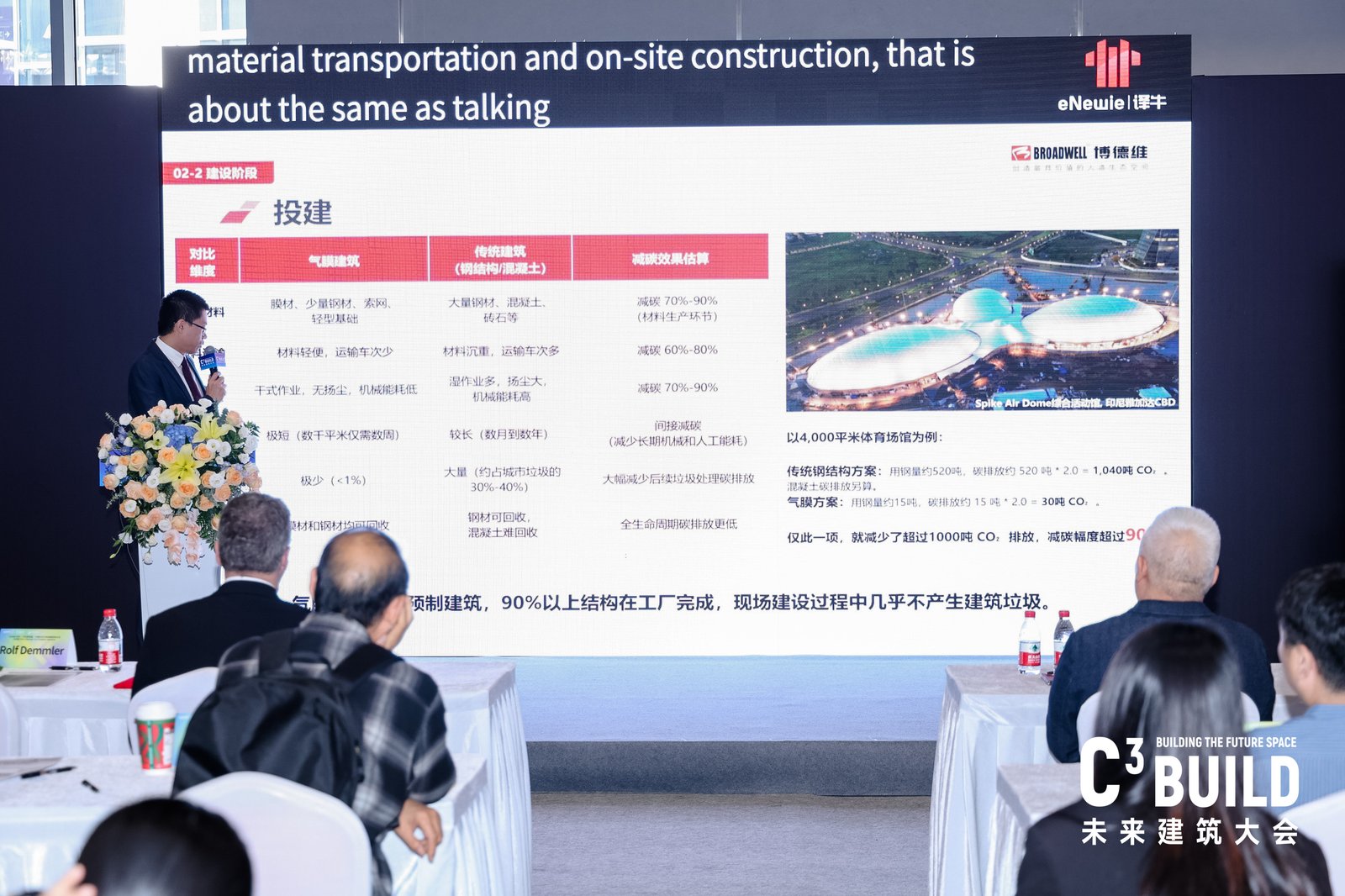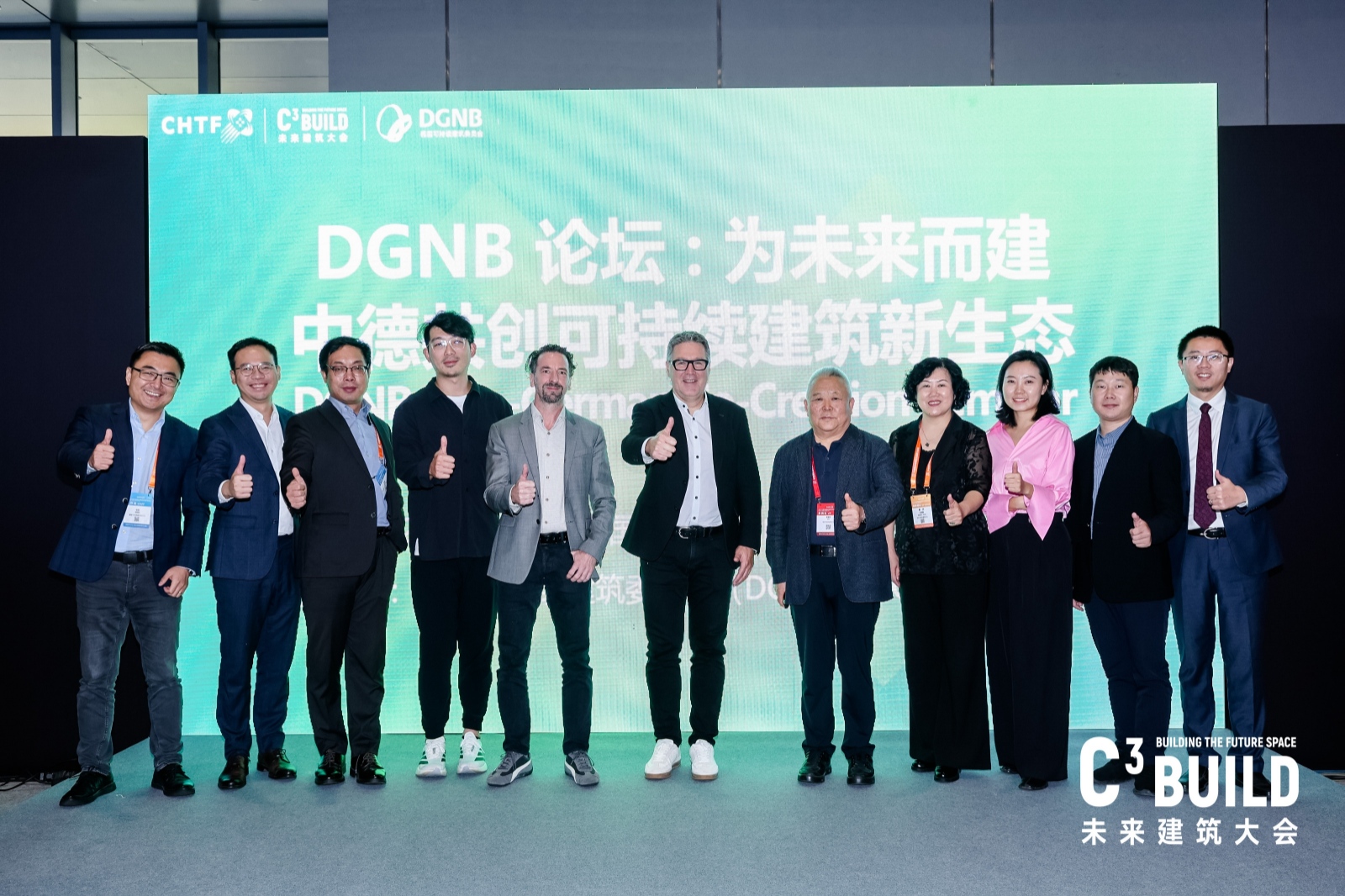News
Broadwell Air Dome
 Site
/uploads/image/677267645dfcf.png
At the C³ Future Building Conference and DGNB Sino–German Seminar, Broadwell showcased air dome solutions that deliver high‑efficiency decarbonization under the DGNB framework. Air domes are lightweight, highly prefabricated, relocatable structures that cut material use and on‑site impacts. A 4,000 m² case shows >90% construction‑phase CO₂ reduction (~1,000 tons) and ~430,000 kWh annual energy savings, with OPEX ~70% lower. Broadwell’s 5+ million m² deployments reduce ~10,000 tons of dust and 0.5–0.7 Mt CO₂‑e annually.
Site
/uploads/image/677267645dfcf.png
At the C³ Future Building Conference and DGNB Sino–German Seminar, Broadwell showcased air dome solutions that deliver high‑efficiency decarbonization under the DGNB framework. Air domes are lightweight, highly prefabricated, relocatable structures that cut material use and on‑site impacts. A 4,000 m² case shows >90% construction‑phase CO₂ reduction (~1,000 tons) and ~430,000 kWh annual energy savings, with OPEX ~70% lower. Broadwell’s 5+ million m² deployments reduce ~10,000 tons of dust and 0.5–0.7 Mt CO₂‑e annually.
Broadwell Showcases at the C³ Future Building Conference · DGNB Sino–German Co-Creation Seminar, Sharing High-Efficiency Carbon Reduction Solutions of Air Domes
Views: 31
Author: Broadwell Air Dome
Publish Time: 2025-11-18
Origin: Site
Shenzhen, China — November 16, 2025 — Broadwell (Shenzhen) Technology Co., Ltd. (“Broadwell”) was invited by the German Sustainable Building Council (DGNB) to speak at the DGNB Sino–German Co-Creation Seminar, a concurrent event of the 27th China Hi-Tech Fair (CHTF). Under the theme “Sino–German Co-Creation: Building for the Future,” the forum convened industry stakeholders to discuss sustainable building methodologies, low-carbon transition pathways, cross-value-chain innovation, and green finance/ESG strategies, to turn sustainability concepts into measurable, actionable business solutions.

At the seminar, Broadwell Vice President Walker Zhao delivered a keynote titled “Energy-Saving and Low-Carbon: How Air Domes Become a High-Efficiency Decarbonization Solution under the DGNB Framework.” He outlined the advantages of air dome buildings across ecological and economic dimensions within the DGNB system, highlighting Broadwell’s low-carbon, energy-saving performance across the full lifecycle—from manufacturing and construction through operation to decommissioning.

Zhao noted that air domes are a lightweight, prefabricated building type. More than 90% of components are produced off-site, and entire structures can be relocated and reused. Their adoption reduces reliance on traditional materials such as steel and cement at the source, lowers environmental impacts from civil works, and helps mitigate urban heat island effects. Air domes are also widely used for environmental protection in large bulk-material stockpiles and urban construction dust/noise control, where they provide reliable enclosure and abatement.

Regarding carbon impacts, Zhao shared a comparative assessment using a 4,000 m² sports venue as a reference. Compared to a conventional steel structure, an air dome can reduce carbon emissions during construction by approximately 1,000 tons, primarily from steel use—a reduction exceeding 90%. In operation, a 4,000 m² air dome sports stadium can save about 430,000 kWh of energy per year, with operating expenses (OPEX) roughly 70% lower than traditional buildings—delivering significant environmental and economic benefits.

Zhao also presented Broadwell’s environmental application cases. According to a rough calculation, to date, Broadwell has deployed more than 5 million m² of air dome enclosures globally for environmental scenarios, including open stockyards (coal, cement, ore, etc), construction sites, and landfills. These installations are estimated to reduce airborne dust emissions by around 10,000 tons annually and avoid approximately 0.5–0.7 million tons of CO₂-equivalent emissions per year.

During the forum, the Shenzhen Green Building Association and DGNB entered into a strategic cooperation. As a member of the Association, Broadwell took the opportunity to establish initial ties with DGNB. The three parties discussed models for deeper collaboration and look forward to jointly advancing China–Germany innovation and practice in sustainable building.















